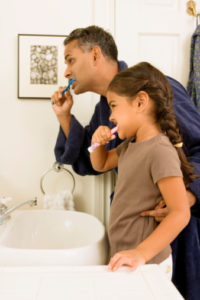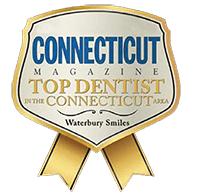A Guide to Brushing and Flossing from Your Family Dentist Waterbury
November 30, 2015
 When it comes to taking care of smiles, the Waterbury Smiles dentists and team love getting to see patients twice a year for checkups and teeth cleanings, but without thorough, effective at-home hygiene, patients are unable to achieve and maintain optimal oral health. While most people know the basics (brush twice a day and floss once), there are a few key changes that can take any at-home hygiene routine from adequate to awesome.
When it comes to taking care of smiles, the Waterbury Smiles dentists and team love getting to see patients twice a year for checkups and teeth cleanings, but without thorough, effective at-home hygiene, patients are unable to achieve and maintain optimal oral health. While most people know the basics (brush twice a day and floss once), there are a few key changes that can take any at-home hygiene routine from adequate to awesome.
Tooth Brushing Techniques
Keep in mind the following tips and tricks to maximize the effectiveness of tooth brushing:
- The 30 minute rule – Many people know they shouldn’t eat or drink for 30 minutes after brushing. This allows fluoride in toothpaste to fully absorb, but what many patients don’t know is the same rule applies to brushing after meals. Directly following eating or drinking, the enamel is weakened and easier to damage. It’s great to brush between meals, but always wait at least 30 minutes or consider using an antimicrobial mouth rinse instead.
- Don’t rinse – After brushing, most people rinse their mouths out with water. Doing this removes fluoride from teeth minimizing effectiveness. If your teeth feel filmy or your mouth feels sticky without rinsing, reduce the amount of toothpaste you use.
- 2 minutes matters – It’s essential that patients brush for at least 2 minutes at a time. This is the minimum amount of time it takes to clean each tooth thoroughly enough to remove plaque. Try setting a timer or listening to a song while you brush to make it easier to keep track of the time.
- Clean systematically – The biggest mistake patients make while brushing is cleaning at random. Even if you clean randomly for two or more minutes, you’re likely to miss something. We recommend developing a systematic plan for cleaning every surface of every tooth. Work from front to back, top to bottom, or split your teeth into quadrants. Whatever works to help you clean the inside, outside, and biting surface of every tooth each time you brush.
Flossing Fundamentals
Many patients dread flossing, and hate the question, “How often do you floss?” Flossing is an essential part of any oral hygiene routine. Floss removes plaque and bacteria that brushing alone cannot reach, and is the best way to prevent periodontal (gum) disease, the most prevalent oral health concern among US adults and leading cause of tooth loss. Some flossing tips to remember include:
- Choose a floss that you like (waxed, flavored, single-strand). If you like it, you’re more likely to keep up the habit.
- Be consistent. Flossing doesn’t have the same instant gratification patients get from brushing, but the long-term oral health effects are dramatic.
- Floss below the gum line on both sides of every tooth.
Find out more from the Dentist 06708 Relies on – Waterbury Smiles
If you’re interested in learning more about at-home oral hygiene or ready to schedule an appointment, contact Waterbury Smiles. Our skilled dental team can’t wait to help you smile.
No Comments
No comments yet.
RSS feed for comments on this post.
Sorry, the comment form is closed at this time.



